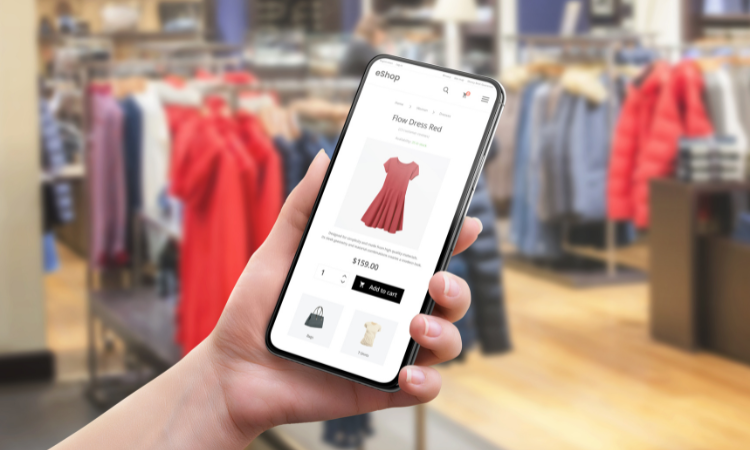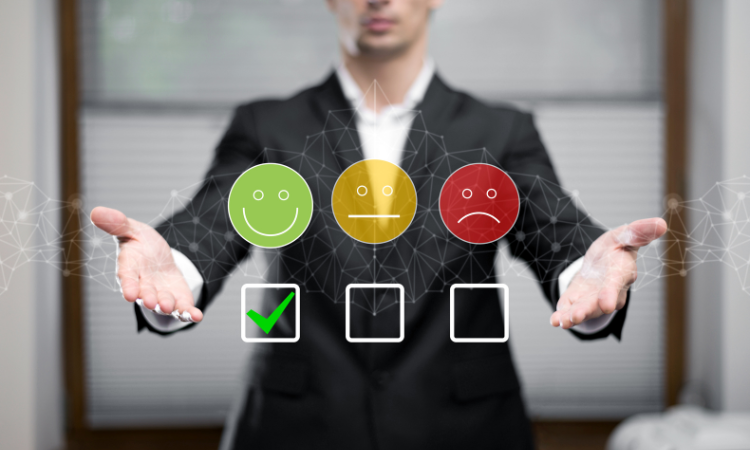Imagine a customer seamlessly transitioning from browsing your website on a laptop to making a purchase through a mobile app, all while receiving personalized recommendations.
This is the power of omnichannel customer experience.
Yet, many businesses struggle to break down internal silos and deliver a truly cohesive journey.
In this article, we'll explore practical strategies to dismantle these barriers, creating a seamless and delightful customer experience that drives loyalty and growth.
TL;DR
- Omnichannel CX is about creating seamless customer journeys across all touchpoints.
- A seamless omnichannel customer experience can boost satisfaction, loyalty, and sales.
- To achieve it, map customer journeys, break down silos, use technology, train employees, and constantly improve based on feedback.
- Zonka Feedback is a powerful CX tool that can significantly enhance your omnichannel customer experience (CX) strategy. By providing a centralized platform for collecting, analyzing, and acting on customer feedback across multiple channels, Zonka Feedback empowers businesses to make data-driven decisions and deliver exceptional customer experiences.
- Sign up with Zonka Feedback for a free 14-day trial or schedule a demo of the product with our expert CX consultants.
Enhance CX with Zonka Feedback🔥
Create surveys, measure customer satisfaction, and close the feedback loop with Zonka Feedback.

Understanding Omnichannel Customer Experience
Did you know that businesses with strong omnichannel customer engagement strategies retain 91% of their customers on average?
Omnichannel customer experience is the art of creating a seamless, integrated journey for customers across all touchpoints, whether online or offline. It's about ensuring every interaction with your brand is consistent, personalized, and effortless. This unified approach not only boosts satisfaction but also drives loyalty.
In the following sections, we'll delve into what omnichannel customer experience entails and explore the significant benefits it offers.
What is Omnichannel Customer Experience?
Omnichannel customer experience refers to creating a seamless, integrated journey for customers across all touchpoints, whether online or offline. It's about providing a unified experience that ensures customers have consistent interactions with your brand, regardless of the channel they use.
Omnichannel customer experience seamlessly unifies customer interactions, creating a cohesive and personalized journey across all touchpoints.
By unifying these touchpoints, businesses can provide a cohesive experience that delights customers, boosts satisfaction, and drives loyalty, ultimately setting the stage for sustained growth and success.
To understand the omnichannel customer experience better, here's an example of Kate.
Kate, a busy executive, browses workwear on your website via an Instagram ad during lunch.
She adds items to her cart, but a meeting cuts her browsing short. Later, on her commute, Kate opens your mobile app. Her cart is there, and based on her browsing, the app suggests matching blouses!
Wow, personalization!
Over the weekend, Kate visits your store. A friendly associate greets her by name – they know her online picks! Kate tries on the clothes, the fit is perfect, and the checkout is quick.
Days later, an email arrives thanking her for the purchase and suggesting matching accessories online.
Nice touch!
This smooth transition across multiple channels – website, app, store, email – is omnichannel done right. It leaves Kate feeling valued and her offline as well as online shopping experience effortless.
Benefits of Omnichannel Customer Experience
In today's digital age, customers expect a seamless journey across all touchpoints they encounter with a brand.
This interconnected experience, known as omnichannel customer experience (CX), offers a multitude of advantages for both businesses and their customers. Let's delve into the compelling benefits that omnichannel CX unlocks, creating a win-win situation for everyone involved.
1. Enhanced Customer Satisfaction
When customers experience a smooth journey across different platforms, their satisfaction levels soar. The ease of switching channels without losing context makes the interaction feel personalized and effortless.
For example, Mark, a tech enthusiast, explores a new smartphone on an e-commerce site, initiates a purchase, but decides to visit the store to see it in person. At the store, he is greeted by a knowledgeable sales rep who already has his online cart details, allowing Mark to seamlessly continue his shopping experience.
The ease and consistency make Mark's purchase satisfying, enhancing his overall perception of the brand.
2. Increased Customer Retention
Customers who enjoy consistent and pleasant experiences across all touchpoints are more likely to remain loyal customers. The familiarity and reliability of the brand build trust and encourage repeat business.
According to research, companies with robust omnichannel experience strategies retain 91% of their customers including a 3.4% increase in customer lifetime value.
This shows how consistency across channels can significantly boost customer retention.
3. Comprehensive Data Collection
An omnichannel approach allows businesses to gather data from various sources, creating a holistic view of customer behavior. This comprehensive data can be used to refine strategies and personalize interactions.
Consider a fitness brand that tracks customer interactions online, through its app, and in-store. They notice a trend: customers who purchase running shoes online often visit the store for fitting advice.
Using this data, the brand starts offering personalized fitting sessions to online buyers, enhancing their experience and driving higher satisfaction rates through a consistent brand experience.
4. Streamlined Operations
Integrating various channels simplifies operations, reducing redundancies and improving efficiency. This streamlined approach not only benefits the business but also enhances the customer experience. A global fashion brand synchronizes its online and offline inventory.
Let's understand this better with an example.
A customer, Alex, finds a jacket online but prefers to pick it up in-store.
The system updates in real-time, ensuring the jacket is available for Alex when he arrives. This integration reduces wait times and stock issues, making the process smooth and efficient for both the customer and the retailer.
5. Personalized Customer Experience
With data from multiple touchpoints, businesses can tailor interactions to meet individual preferences and needs. Personalization enhances customer engagement and loyalty. A research study by McKinsey found that 71% of consumers are now expecting companies to deliver personalized experiences. More so, 76% of customers get frustrated when they don't get it.
This highlights the importance of tailored interactions in driving sales.
76% of customers get frustrated when they don't get a personalized experience.
6. Real-Time Customer Support
Providing real-time support across all channels ensures that customer issues are resolved promptly, fostering trust and satisfaction.
Imagine David, an avid gamer, faces an issue with a newly purchased gaming console. He starts a chat on the company’s website, which transitions to a phone call when the problem persists. The support agent accesses the chat history, quickly diagnosing and resolving the issue.
The seamless support experience reassures David, increasing his trust in the brand.
7. Competitive Advantage
A robust omnichannel strategy sets businesses apart from competitors still using disjointed, multichannel approaches. The cohesive experience attracts and retains more customers.
For instance, a banking institution offers seamless integration between its mobile app, website, and branches.
A customer starts applying for a loan online, continues the process on their app, and completes it at the branch. This smooth journey makes the customer feel valued and supported, giving the bank a competitive edge over others with less integrated processes.
Understanding the benefits of an omnichannel customer experience is crucial, but knowing how to implement it effectively is the next step. In the following section, we will explore practical strategies and actionable steps to set up an omnichannel experience, ensuring your business stays ahead in providing exceptional, integrated customer journeys. Stay tuned to transform your customer interactions and drive growth with a robust omnichannel strategy.
Examples of Successful Omnichannel Experience
Leading brands have mastered the art of omnichannel customer experience by creating cohesive and personalized interactions that cater to the evolving needs of their customers. By leveraging advanced technologies and innovative strategies, these companies have set the benchmark for excellence in omnichannel CX.
Let's explore some standout examples that highlight how these enterprises have successfully implemented omnichannel customer experiences, inspiring others to follow suit
1. Starbucks
Starbucks excels in providing a unified customer experience through its mobile app, which integrates seamlessly with in-store services. Customers can order ahead, collect loyalty points, and make payments, ensuring a consistent and convenient experience. The Starbucks app also personalizes offers and recommendations based on customer preferences and purchase history, enhancing customer engagement and loyalty.
2. Disney
Disney's omnichannel experience strategy includes the My Disney Experience tool, which allows guests to plan their trips, book hotels, and make reservations seamlessly. The MagicBand integrates with this system to provide a hassle-free experience throughout their visit. The MagicBand acts as a room key, park ticket, and payment method, ensuring a cohesive and convenient experience. Disney's integration of physical and digital touchpoints creates a magical and personalized guest experience.
3. Amazon
Amazon's successful omnichannel strategy is evident through its seamless integration of online and offline services. The Amazon Go stores utilize "Just Walk Out" technology, allowing customers to shop without waiting in line for checkout. Customers use the Amazon app to enter the store, and their purchases are automatically tracked and charged to their Amazon account. Additionally, Amazon's integration of Alexa, their virtual assistant, helps enhance the customer experience by providing personalized recommendations and streamlining shopping tasks.
4. Nike
Nike has effectively implemented an omnichannel experience strategy through its use of mobile apps, online platforms, and brick and stores. The Nike app offers personalized product recommendations, exclusive content, and access to special events. In-store, customers can use the app to check inventory, reserve products, and access additional product information. Nike's integration of digital and physical store channels ensures a seamless shopping experience, enhancing customer engagement and satisfaction.
5. Nordstrom
Nordstrom has been a leader in omnichannel retail by integrating its online and in-store experiences to provide customers with maximum convenience and personalization. The "Reserve Online & Try In-Store" service allows customers to select items online and try them on in a local store, blending digital convenience with physical experience. Nordstrom's investments in buy online, pick up in-store (BOPIS), and curbside pickup programs have proven popular and profitable.
Additionally, Nordstrom leverages technology to personalize the shopping experience, offering tailored recommendations and seamless service across all channels, ensuring a high level of customer satisfaction and loyalty.
These examples illustrate how major brands have successfully implemented omnichannel strategies to enhance the customer experience. By integrating digital and physical channels, these companies provide seamless, personalized, and convenient interactions that drive customer loyalty and satisfaction.
For enterprises looking to adopt an omnichannel approach, these success stories offer valuable insights and inspiration for creating a unified and engaging customer journey.
Setting Up & Implementing an Omnichannel Customer Experience Solution
Now that you know what omnichannel experience is and the benefits of an exceptional omnichannel CX program, you're left lingering with a single question.
How do you bridge the gap between siloed departments and disconnected channels to deliver this seamless customer experience?
Here, we'll unpack the practical steps you can take to build a robust omnichannel customer experience strategy, fostering a base of loyal customers and boosting your bottom line.
We'll understand the steps using the example of Jane, a customer experience manager at a large retail chain.
Step 1. Map the Customer Journey
As the Customer Experience Manager at a large retail chain, Jane starts by mapping out all customer touchpoints. Using different customer journey mapping tools, she visualizes interactions from social media platforms, websites, emails, physical stores, mobile apps, customer service, and other touchpoints.
This detailed map reveals critical gaps and opportunities.
For instance, Jane notices many customers abandon their carts online but complete purchases in-store, prompting her to strategize ways to bridge this gap and enhance the customer journey.
Here's how you can implement the same:
- Map Out Touchpoints: Identify all the touchpoints where customers interact with your brand. This includes social media, website, email, brick-and-mortar stores, mobile apps, and customer service channels. Use customer journey mapping tools like Smaply or Lucidchart to create detailed journey maps that illustrate customer interactions and highlight potential pain points and opportunities for improvement.
- Develop Customer Personas: Create detailed personas that represent different segments of your customer base. Include demographic information, preferences, behaviors, and pain points. Use data from CRM systems, surveys, and social media to inform these personas.
- Advanced Customer Segmentation: Beyond basic personas, use machine learning to create dynamic segments that evolve with customer behavior. You can analyze purchase patterns, browsing behavior, and customer feedback to continually refine customer segments for more precise targeting.
- Identify Micro-Moments: Focus on critical points in the customer journey where quick decisions are made (e.g., "I-want-to-know" moments). Optimize these moments for better engagement.
For example, Google’s micro-moments can guide understanding of when and where customers need information or make decisions.
Step 2: Integrate Your Channels
To create a seamless experience, Jane integrates all channels using a Customer Data Platform (CDP). This centralizes data from customers, providing a unified view of interactions.
Drawing inspiration from Starbucks, she ensures consistent messaging across all platforms.
A customer starting a purchase online can effortlessly complete it in-store, with associates accessing their online cart. This integration delivers a cohesive brand experience, reducing friction and improving satisfaction.
Integrating different channels simplifies operations, reducing redundancies and improving efficiency. This streamlined approach not only benefits the business but also enhances the customer experience. Here's how you can achieve the same
- Centralized Customer Data: Use a Customer Data Platform (CDP) like Segment or Tealium to centralize data from various sources, providing a unified view of each customer. Ensure that this data is accessible across departments to enable personalized interactions.
- Unified Messaging: Maintain consistent branding and messaging across all platforms to ensure a cohesive brand voice. Align marketing, sales, and customer service teams to present a unified message to customers via an omnichannel marketing strategy.
- Seamless Transitions: Ensure that customers can switch between channels without losing context. This means integrating your CRM, POS systems, and other tools to share customer insights in real time.
Starbucks was able to transition very well into delivering an omnichannel customer experience. Its mobile app and in-store experience allow customers to order online and pick up in-store seamlessly.
Step 3: Leverage Technology
Jane leverages advanced technologies to boost the customer experience.
She deploys Zonka Feedback for real-time insights from in-store kiosks, mobile apps, and online surveys. Its AI feedback analysis helps her identify customer sentiments, trends in customer behavior, and much more.
Utilizing AI, her team personalizes interactions based on feedback and behavior data, predicting preferences and tailoring recommendations.
Automation tools streamline repetitive tasks like sending cart abandonment emails, ensuring consistent follow-ups without manual effort. These technologies enable Jane's team to offer a more personalized, efficient, and engaging customer experience.
- Feedback Tools: Implement customer experience software like Zonka Feedback to gather real-time feedback across multiple channels. This helps in understanding customer satisfaction and identifying areas for improvement. Collect feedback from in-store kiosks, iOS survey apps, mobile survey apps, in-app feedback, and online surveys to get a comprehensive view of customer sentiment.
- Analytics and AI: Use analytics and AI to understand customer behavior and predict future actions. These technologies can help personalize the customer experience and improve operational efficiency. We do know that over 71% of consumers expect personalized interactions, and AI can help deliver these experiences by analyzing customer data and predicting preferences.
- Automation: Automate repetitive tasks to improve efficiency and ensure consistent customer service across multiple channels. Example: Automated email campaigns triggered by customer behavior, such as cart abandonment or post-purchase follow-ups, can enhance the customer experience and drive engagement.
Step 4: Train Your Team
Recognizing the critical role of her team, Jane organizes cross-functional training sessions. She brings together marketing, sales, IT, and customer service teams to understand the new systems and their roles. Frontline employees are equipped with mobile devices to access customer profiles and provide personalized service.
For example, when Irene visits the store, the associate can see her past purchases and preferences, delivering a tailored shopping experience that boosts customer satisfaction.
- Cross-Functional Training Programs: Develop training programs that encourage collaboration across departments. Ensure all team members understand and are aligned with the omnichannel experience strategy. Conduct workshops that bring together marketing, sales, IT, and customer service teams to align on goals and strategies.
- Empower Frontline Employees: Equip frontline employees with the tools and knowledge they need to provide exceptional service and resolve issues across all channels. Provide mobile devices and access to customer profiles for in-store associates to offer personalized service. You can even ensure that your frontline employees are provided with key customer insights from the feedback they've shared before to ensure they are providing more personalized service.
Step 5: Pilot and Refine
Adopting an agile approach, Jane initiates a pilot program for a new mobile app feature in a specific region.
She gathers feedback from customers and employees, refining the feature based on their insights. This iterative process allows her to test and improve the initiative before a full-scale rollout. Involving customers in this phase ensures the final product meets their needs and expectations, reducing the risk of failure and enhancing the overall customer experience.
- Rapid Prototyping and Testing: Use agile methodologies to quickly prototype and test new omnichannel initiatives. Gather feedback and make necessary adjustments before full-scale implementation. Launch a pilot program for a new mobile app feature in a specific region, gather feedback, and iterate based on user responses.
- Customer Co-Creation: Involve customers in the development process through co-creation sessions. This provides valuable insights and ensures the solutions meet customer needs. Host focus groups or online communities where customers can share their ideas and feedback on new features or services.
Step 6: Monitor and Optimize
To drive ongoing improvement, Jane relies heavily on business intelligence tools to gain a clearer view of operational performance. Platforms such as Tableau allow her to track KPIs in real time, uncovering trends and inefficiencies that might otherwise go unnoticed. By combining these insights with predictive analytics, she can proactively adjust strategies to better meet evolving customer needs.
She establishes a PDCA (Plan-Do-Check-Act) cycle for regular reviews and updates, ensuring the omnichannel strategy remains aligned with customer expectations and market trends. This ongoing optimization helps Jane's team stay ahead of the competition and consistently deliver exceptional customer experiences.
- Advanced Analytics and BI Tools: Implement business intelligence tools like Tableau or Power BI that provide real-time analytics and actionable insights. This helps in tracking the performance of your omnichannel experience efforts. Visualize data and track key performance indicators (KPIs) in real-time.
- Predictive Analytics: Use predictive analytics to anticipate customer needs and behaviors, allowing for proactive adjustments to your strategy. Develop predictive models that analyze past customer behavior to forecast future trends and needs.
- Continuous Improvement Frameworks: Establish a framework for continuous improvement. Regularly review and update your omnichannel strategy based on new data and trends. Implement a PDCA (Plan-Do-Check-Act) cycle to ensure ongoing optimization and alignment with customer expectations.
By following these steps, large-scale enterprises can set up and implement a robust omnichannel customer experience strategy that drives satisfaction, loyalty, and business growth.
Why Use Zonka Feedback for Omnichannel Customer Experience
Implementing an omnichannel customer experience strategy requires continuous feedback and real-time insights to refine and optimize interactions across various touchpoints. Zonka Feedback is an essential tool that helps large-scale enterprises gather, analyze, and act on feedback efficiently across all channels.
Here's how this comprehensive customer experience software can help.
1. Real-Time Multichannel Feeback Collection
Zonka Feedback enables the collection of real-time feedback from multiple channels, including in-store kiosks, mobile apps, websites, emails, and SMS, enabling an overview of your omnichannel experience efforts. This comprehensive approach ensures that every customer interaction point is covered, providing a holistic view of customer sentiments.
For instance, after launching a new product, you can use Zonka Feedback to collect opinions from in-store kiosks, mobile app surveys, email surveys, and follow-ups from your existing customers. This multi-channel feedback collection helps identify issues quickly and gauge overall satisfaction of the customer.
2. Centralized Feedback Dashboard for Unified Data View
Zonka Feedback, a comprehensive customer feedback system, consolidates feedback from all channels into a centralized dashboard. This unified view allows you and your team to monitor customer feedback in real time, identify trends, and pinpoint areas needing improvement.
For instance, by accessing the centralized dashboard, you can see that customers are consistently mentioning slow service in specific store locations. This insight will enable you to address the issue promptly by reallocating resources or retraining staff.
3. Automated Alerts and Workflows for Timely Responses
Zonka Feedback’s automated alerts and workflows ensure that critical feedback is addressed immediately. When negative feedback is received across any channel, the system can automatically route the feedback and notify the relevant team members. It could even trigger predefined actions to resolve the issue, thus ensuring their experience is seamless.
For example, if an existing customer leaves a negative review about a delayed order, Zonka Feedback can automatically send an alert to the customer service team. The team can then reach out to the customer to resolve the issue, turning a potential detractor into a satisfied customer.
4. Advanced Analytics and Reporting for Actionable Insights
With Zonka Feedback’s advanced analytics and reporting features, your team can generate detailed reports that highlight key metrics such as Net Promoter Score (NPS), Customer Satisfaction (CSAT), and Customer Effort Score (CES). These reports provide actionable insights to refine strategies and improve the overall customer experience.
For instance, analyzing feedback data, you discover that while the NPS is high, the CES score from your customer service surveys indicates that customers find the online checkout process cumbersome. This insight leads to a redesign of the checkout flow, making it more user-friendly and efficient.
5. Seamless Integration with Existing Systems
Zonka Feedback integrates seamlessly with existing CRM systems, helpdesk software, and other business tools. This integration ensures that feedback is linked with other customer data, providing a comprehensive understanding of the customer journey.
Like, you can integrate Zonka Feedback with the company’s CRM system. This would allow you to correlate feedback with specific customer profiles. Your team can know which high-value customers are dissatisfied and take proactive steps to improve their experience.
6. Customizable Feedback Forms for Tailored Feedback Collection
Zonka Feedback, a powerful form builder software, allows for the creation of customizable feedback forms tailored to different touchpoints and customer needs. These forms can be branded and designed to capture specific information relevant to various stages of the customer journey. This ensures your experience is never hampered, even when collecting feedback.
For example, for in-store retail surveys and feedback, you can design a simple, intuitive form focused on service quality and product availability. For your online surveys, you can include questions about website navigation and the checkout process, ensuring that each form is relevant to the customer’s interaction context.
7. AI-Driven Sentiment and Text Analytics
AI feedback analysis takes Zonka Feedback to the next level by providing predictive insights and enabling personalized interactions. AI analyzes large datasets to identify patterns and predict future customer behavior, helping businesses stay ahead of customer needs.
For example, using AI, your team can predict which customers are likely to churn based on their feedback and interaction history. This allows them to proactively address issues and offer personalized incentives to retain these customers.
Further, this AI survey tool also offers AI-powered sentiment analysis that can help your team understand the emotional tone behind customer feedback. This analysis can reveal underlying customer feelings and improve service strategies.
Conclusion
Implementing an omnichannel customer experience strategy is essential for businesses looking to thrive in today's competitive landscape. By understanding the customer journey, integrating channels, leveraging technology, and continuously improving based on feedback, you can create a seamless and satisfying customer experience.
By leveraging Zonka Feedback and AI analytics, large-scale enterprises can gather comprehensive, real-time feedback across all customer touchpoints. The insights gained from this feedback enable continuous improvement of the omnichannel customer experience, fostering customer loyalty and driving business growth. AI analytics further enhance these capabilities by providing predictive insights, real-time data processing, and deeper understanding through sentiment analysis.



.png)







